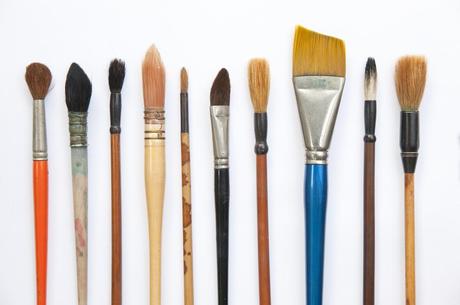
If you’re looking to get into painting, choosing a brush can be difficult to get started with as there are so many options out there. Knowing which one to choose can be tough, especially if it’s a concept that’s completely new to you. Here is a little guide that will talk you through the main, most common types of brushes available, the materials they are made from and we’ll talk a little bit about the impact of the size of the brush you opt for.
Round A brush in which the bristles curve into the middle at the end. It’s excellent for control and accuracy.
Flat With straight or rounded edges (known as the filbert), the flat brush is great for edging and filling in areas.
Rigger The round and narrow, long-bristled brush for making lines and detail work.
Fan A flat brush with bristles fanned out, ideal for delicate blending.
Angle A multi-purpose brush similar to flat brush, but cut at an angle, meaning you can use it for a number of techniques.
Having a visual example of what the different types of brushes can achieve is often the best way to choose the right paint brush for you and your artistic needs. Here’s a great example for you to have a little look at for some ideas!

Materials Bristle Usually the cheapest option is the bristle brush which is made from pig hairs. This is a standard brush that you would find often in artists' collections. The better the quality of natural bristles the smoother and glossier the finish you'll achieve.
Synthetic If you’re using latex paint you'll need synthetic bristles. These are usually sold at a range of prices depending on the type of the brush, the size, and of course – the quality. Shop around on sites like Artifolk for the best deals. They have a different feel than natural hair brushes.
Sable Usually the most expensive is the sable brush, due to what it’s made of. It’s made from various other fine-haired animals, such as sables, weasels, and other rodents. Like other animal based bristle brushes, these are the best for when painting with oil-based paints and varnishes.
Size Smaller brushes Smaller brushes, called trim or sash brushes are intended for use in small, tight spaces, and if the bristles are tapered, they are able to get into corners and grooves much more easily than a flat-bottomed brush of the same size.
Larger brushes Likewise, wider brushes (called paint or wall brushes) are designed for painting large flat surfaces. As you increase the width of the brush, you compromise control and precision.
x

